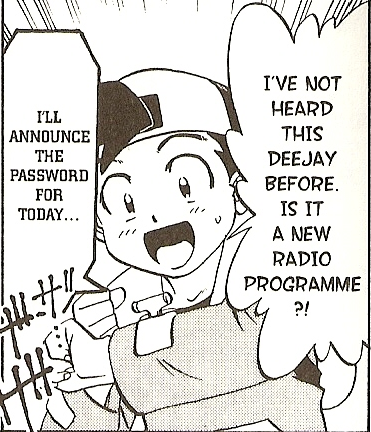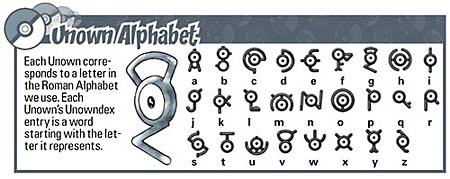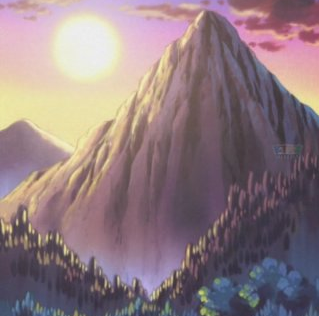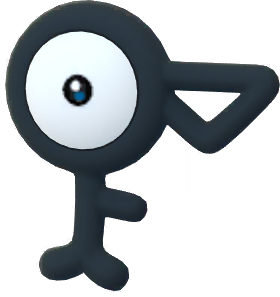Introduction
Who do you think is the most powerful Pokémon?
Is it one of the many legendary Pokémon? Or the mysterious mythicals, who are almost never seen? And what about the God of all Pokémon, Arceus?
What if I argued that it wasn’t a Pokémon known for being very big, but rather, a small Pokémon, a Pokémon that by itself has no power on its own but, when combined in massive colonies, perhaps has access to the most power of any canonical Pokémon ever.
Three Years Ago

The year is 1997. For the first time ever, children around the world were entering the world of Pokémon. This world, to the player, only serves one purpose - to propagate the capture, exchange and conflict of Pokémon - and become the very best, the Pokémon master.
On their journey, the player engages with a world that immediately thrusts them into the universal exchange of Pokémon. On every corner, they interact with a system of consumption. They capture creatures from their native habitats and train them as fighting machines. Excess Pokémon are stuffed into computers where they hang in limbo. Battles with other trainers are encouraged along the way. Schools teach the essentials of battling and spread the idea that these creatures actually enjoy it. An entire system of badges is implemented in place to allow the player to advance through the establishment and signify their power as a Pokémon Trainer.
The Pokémon League bears incredible power over the region, shaping how the cities focus their resources and being integrated heavily with the economy. Silph Co, a major corporation, produces many products including various kinds of Pokéballs. Nearly every town is shaped by its local gym and Pokémon Center, establishing an immediately accessible trainer culture between every sightseeing route. And a mysterious project between Gym leader Blaine and Mr. Fuji creates the genetically altered superweapon, Mewtwo - which breaks free of their creator’s grasp with its immense power.
Team Rocket presents itself as the main antagonist. They establish their wealth through different methods, by accumulating resources from stealing fossils, Pokémon trafficking and even a questionably legal gambling ring. They amass enough power to overtake Silph Co in an attempt to steal the Master Ball. The only thing that stops them is you - an eager trainer who is simply a process of eliminating obstacles in the attempt to become the Pokémon league champion like everyone else. The player overcomes both Team Rocket and the Pokémon League in their unstoppable desire for exploration, power and resources. Eventually they capture Mewtwo for themselves, to battle among other Pokémon Champions in the school yard, and force Kanto to submit under their thumbs.
Gold, Silver and Crystal

Fast forward three years - a new set of Pokémon games arrives in the west. These games have many new Pokémon and take place in a completely different region west of Kanto - Johto. This region immediately has a very different atmosphere from the highly optimized Kanto. Playing as the new character Gold, what players find instead of the first location having a locked gym, it’s instead a gentle seaside town, and there is a friendly, passive atmosphere until they are confronted by the thieving rival Silver, who breaks the facade of peace and represents the first encounter with the theme of traumatic change and loss of innocence.
Pokémon Gold and Silver is a story of trauma, of change. Exploring the Johto region, the player encounters towns that, unlike those of Kanto, have many important cultural landmarks that integrate each town deeply with their local stories and mythologies. Temples, towers and shrines are scattered through the region, decorated in various legends. However, these ecologies are threatened by the invasion of the Pokémon League. Their presence is immediate, with most towns and cities having Gyms, Pokémon Centers and Marts, splitting nearly every town down a gerrymandered line of old and new.
Ecruteak City, one of the few large cities to cling tightly to its identity in this new world, sets the metaphorical stage for this transition. One legend mentions that two towers, a tin and brass tower, were built 700 years ago to facilitate connection with local Pokémon. The brass tower awakened Pokémon, while the tin tower brought them back to sleep. Atop the two towers were the Pokémon Lugia and Ho-oh respectively.
However, 150 years ago, lightning struck the brass tower, setting it ablaze in a horrible fire, that lasted for three days until it was put out by a sudden downpour. In the fire, three nameless Pokémon died, brought back to life by the power of Ho-oh, and transformed them into the legendary beasts Raikou, Entei and Suicune. The birds then fled, never to be seen again by mortal eyes - Lugia hid under the sea and created storms, while Ho-oh fled into the skies and waited to return for a trainer with a pure heart. As the player eventually explores the basement of the Burned Brass Tower, they release the beasts from their slumber - replacing the role of the tower for the first time since the disaster - and the legendary beasts race across the land, much to the shock and dismay of the local community.
Coincidentally, 150 years before Pokémon Crystal was released, Japan was forcibly opened to western trade by the United States. The burning tower represents the end of an era of ecological interconnection of Japanese Shintoism. The surviving tower was the tower that “put Pokémon to sleep” and represents the alienation from the increasing influence of the Pokémon League Complex. The forces of nature scatter across the land, losing their identity as the cultural ecosystem starts collapsing, and they re-contextualize as myths and natural forces of lightning, volcanoes and the northern winds. Lugia, perched on the burning tower of awakening, fled into the oceans, alienating itself from humanity with vicious storms and whirlpools, while Ho-oh, symbolizing happiness and the beginning of a new era, fled after creating the legendary beasts - both birds representing emotional reactions to the collapse of this relationship with nature. The player’s natural exploration is the first action to recover from the tragedy.
The Rise of Radio

Radio represents a very specific development in the narrative. The Goldenrod Radio Tower replaced an ancient, unkempt temple designated for Pokémon in the region, and before the modernization of the city, many Pokémon were said to live there among the people. This new tower marks a moment where the transmission of information makes a radical change. Instead of people communicating with each other and Pokémon, humans are directly spoken to through a mass broadcast device, sanctioned by the development of the modern city, and Pokémon are given orders by trainers. Radios are now found in nearly every house in Johto through which information is repeated and broadcast to the masses. Unlike any other structure in Johto, the Radio tower doesn’t just impact the city it redevelops - it impacts the entire region’s culture through direct control of the airwaves, transforming communication into a hierarchy. This contrast against tradition and knowledge is no more apparent than in Kurt the Ball Maker, who continues his family craft of carving Pokéballs out of Apricorns while listening to the Lucky Number Show in the background.
Early in the game, the player visits the Radio Tower and get their own add-on card, allowing them to tune into the stations wherever they go with the PokéGear. Most of the stations are quite boring, monotonous and randomly generated content, some encouraging audience interaction for prizes, broadcast through most of Johto with no interruption. Mysteriously, this facade of direct communication control breaks down in the vicinity of the mysterious Ruins of Alph, near Violet City. In these ruins, a strange, repeating signal injects itself between empty bands. After solving the first of the sliding puzzles in the ruins, the player releases the source of these mysterious signals - the Unown.

Unown are floating ABC particles, with no meaning on their own. They only have strange, invisible hidden power that they can release, and on their own, its not much. It’s said however that if many come together in the right combination, they can produce an engine of incredible power. Through the mysterious flow of their movements, they generate a bizarre signal pattern that fills the ruins with a strange presence. Even more strangely, shortly before the player arrives, they rearrange themselves on the walls when no one is looking, to form patterns in English, noted by a scientist near the first tablet puzzle. When the player responds to this new message, “ESCAPE”, by using the Escape Rope, they reveal a never-before seen chamber to the surprise of the scientist. According to the Japanese version of Crystal, a scientist theorizes that the sudden changes may be a result of radio waves emitting from a nearby communication center that was cut from the international releases. Unfortunately, not much else can be done here for now, and the player continues their journey through Johto.
Control the Airwaves

The nefarious Team Rocket was disbanded 3 years ago after Red defeated Giovanni, who retreated back into deep training. However, they seemingly persisted through a disconnected network of loyal grunts and executives who hoped one day to get back their head. They are first encountered in Azelea Town, brutalizing the local slowpoke, but are only seen as a local menace due to their small scale. Through these micro-operations, they soon gather enough resources to assemble an experimental radio transmission device in Mahogany Town, near the Lake of Rage. This project also seized the radio waves, but unlike the Unown, they were exploiting this invisible power to try to control thousands of Pokémon. Their actions tormented the Pokémon in the Lake of Rage, causing many of the Magikarp to suddenly evolve into dangerous Gyarados. The incident also attracted many tourists whom they readily exploited for further financial resources. Radio was no longer just a mode of communication, a mode of transmission, but also now a mode of direct control.
The player eases the Red Gyarados by battling and capturing it. Afterwards, with the help of Lance, they locate Team Rocket’s hideout hidden above a shady shop, raiding the complex. Team Rocket buys time using a complex password system spread across multiple grunts and even a Bird Pokémon. When infiltrated and dismantled, the machine, built from crude parts and powered by Elecrode, blows open the black box behind radio transmissions and stops the disruption. However, it’s too late - Team Rocket has moved onto bigger plans by seizing the Goldenrod Radio Tower while the player was infiltrating the Mahogany base.
Returning to Goldenrod, much of the town is blocked off by the Rockets. The Tower, completely taken over, has essential broadcast rooms locked off, and the Rockets stuffed the director in the storage basement of the Underground Tunnels. Upon rescuing him, the player discovers Team Rocket’s ultimate plan - to use the radio waves to take over all Pokémon across the region and make them lose their minds under the control of Team Rocket, as a broadcast superweapon. However, Team Rocket is so desperate to locate their beloved Giovanni that they waste precious time attempting to reach him through the broadcast, granting the player enough time to stop the seizure in its tracks and return power back to the Director - re-establishing power in the radio station empire. In comparison, the minor, localized perturbations caused by the Unown are still undetected, influencing the player towards the mystery of the legends around the region.
A Changed Kanto

After completing the final badges and defeating the Pokémon League, to celebrate, the player receives the Master Ball and is granted access to Kanto through a ticket for the S.S. Aqua. Upon arrival, the player immediately experiences the major transitions across Kanto in the last three years. Navigating Kanto out of order, with facilities moved and changed, it feels like a familiar but corrupt memory. These changes mark Kanto’s influence over Johto, through the destruction of the Copycat’s house and reclamation of the abandoned power plant to build the Magnet Train, a pipeline between the two regions. Johto contributes its labor, such as Kurt’s son producing Pokéballs for Silph, and the distribution of Moo Moo Milk, through these distribution lines, and the train compounds the continual invasion of the Pokémon League west. Kanto progresses towards total optimization of the integration of League technocapitalism by integrating radio into its own territories, leveling Lavender Town’s Pokémon Tower, the famous resting place of many deceased Pokémon, and relocating their graves to a small memorial site. This process continuously unfolds from reactions to the newly integrated Johto, as access to the Radio Tower is heavily restricted in response to Team Rocket’s shenanigans.
The environment itself is part of this transition, challenging overarching oppression of environmental consumption. Cinnabar Island, the former home of Blaine’s gym, questionable science experiments, military-grade genetic experimentation, and research, is consumed in a massive eruption, taking all structures with it. Blue, once the arrogant, nearly unstoppable rival of Red, looks upon the rubble of the island, contemplative. He remarks on the fickle power of nature consuming the constructs of man. With the disappearance of Red after losing the championship to his rival, there is no more friction to turn his gears. He submits to a respectable managerial-like role in accepting his position as the Viridian Gym leader, notorious for its exclusivity and absence.
The eruption marked the extinction of the short-lived practice of resurrecting fossils, and as a result of the collapse of the collaboration between Cinnabar Island’s Laboratory and Pewter City’s Science Museum, progress was lost forever. These once living creatures, given the breath of life again through scientific revolution, yet again find themselves nothing more than a memory of the past; their images only publicly viewable mysteriously on the ancient tablets of the Ruins of Alph.
The Mystery of Suicune and the Unown

Through the adventure, the player has a random chance of encountering the legendary beasts roaming the land after awakening them from their slumber. Suicune in particular is curious towards the player, but fleeting after each approach. After freeing the Goldenrod Radio Tower from Team Rocket’s grasp, the player receives the Clear Bell, a remnant from the former shrine that was uncovered while constructing the Radio Tower. Returning to Ecruteak’s Tin Tower with the bell, the player is confronted by three sages to determine if they are truly the trainer of legend. After proving their worth, the sages allow the player to enter the Tin Tower, where they confront and capture Suicune.
Of the legendary POKEMON, SUICUNE is said to be the closest to
HO-OH. I hear there may also be a link to POKEMON known as UNOWN.
The POKEMON UNOWN must be sharing a cooperative bond with SUICUNE.
The other two beasts must be caught roaming the land, which most players will opt to use the Master Ball to catch one of them because of their tendency to flee and rapidly change location just beyond the player’s grasp. Through this process, the player reunites the awakened forces represented in the destruction of the Burned Tower, and with the trio combined again, Ho-oh returns to the summit. The sages provide the player with a feather as an amulet as they climb the tower to capture and reunite Ho-oh with it’s subjects.
After capturing Ho-oh, the player can return to the Ruins of Alph to complete the puzzles, by following the instructions created by the newly rearranged Unown. The Ruins themselves are as mysterious as the Pokémon that inhabit them. According to research, the Ruins were built about 1,500 years ago. However, the tablets feature Pokémon that were long extinct by the time the ruins were created, only recently resurrected a few years prior on Cinnabar Island’s Laboratory, along with imagery of Ho-oh. Upon completing all the puzzles, the player discovers a mysterious text inscribed on the floors:
Our words shall remain here for the ages,
Thus we shall erect a Pokémon statue outside.
We humans must learn to walk in harmony with them.
We depart for their sakes.
They possess great insight and refuse the outside world.
In Pokémon Heartgold and Soulsilver, more is revealed about the Unown - they appear to communicate through invisible radio waves. Their movements appear erratic, but according to research, it follows specific intricate patterns. There was a mysterious people who tried to cohabitate with the Unown but disappeared without a trace.

Perhaps the real connection the Unown have to Suicune, Ho-oh, and the Fossil Pokémon, is how the Unown connects all of these various modes of expression through its invisible communications through the radio waves. Everywhere the narrative goes, the Unown follows, connecting all the pieces of the puzzle through the invisible movements underneath that which unite them, riding on the flows as the currents pass through them. When humans try to seize control of the radio waves for themselves, the systems break down, but the Unown persist. The writing is on the wall.
The Ruins are just a surface of crude internal self-reflection for the radio waves, physically assimilating the Unown’s signification, a system so fragile and fickle that it must be protected from the world outside of their insulated constructed ruins. The Unown’s great insight is a perspective created by their very role as the Symbol Pokémon, having the real meaning passing through them. Their specific arrangement, together, encode a story of Pokémon, a story of ancient fossils whose bodies calcified into the rocks, a story of arcane creatures who’s sadness could create gods from the ashes, and a story of a ruthless technocapitalist grinder that consumes everything in war games - all in invisible movements that are only understandable through language when everything lines up in place. And it’s the player - the person who reads all the letters through the game, analyzes the research, listens to the stories, who ties the narrative together and unites all the components under one experience. By capturing and rearranging the Unown, and participating in the narrative they are responding to, the player rearranges them in a new way, and see the world from a new perspective.
In the past, the humans and Unown tried to live together, but were unable to coexist. The Unown needed the insulation of the Ruins to introspect, and humans desired to explore the outside world. This fundamentally alienated humans from the intuitive connection the Unown gave the people. The ruins were abandoned, and the people fell to the tides of alienation. As a result, massive beautiful harmonious structures emerged, only to be traumatically destroyed by the consequence of their own parts. The only way out is to return to the Unown, to change the station on your PokéGear to the tune of machinic unconscious, and to complete their story.
The final loose thread is Lugia - the traumatized, alienated bird who shielded itself behind violent whirlpools in the Whirl Islands. After obtaining the Silver Wing from an elderly man in Kanto, the player navigates the rough currents and dark caverns, descending deep into the oceanic cave to calm the wounded beast. Capturing it and allying Lugia by their side, the player now unites all of the legends separated by the traumatic changes through the story, and ushers an era beyond the towers. But what does that entail?
Red
With the main objectives of the game completed, there is little more to do other than to complete the Pokedex and train. Beyond the Pokémon League, beyond the legends of the region and the Unown, lies only one more challenge.
Red.

Red is the protagonist from the first game. For many, he is the first experience the player ever had with being a Pokémon trainer. His progression represents the accumulation of power and influence. He has outgrown the Pokémon League. Blue is nothing but a fading memory. Team Rocket is nothing to him. His power is ultimate. A man with no words, he focuses his interest in only one thing - becoming a Pokémon Master.
Concentrating so much of its power into his body, he has no other choice but to train vigorously on the brutal peak of Mt. Silver, a mountain so dangerous that the player is only granted access after defeating the rest of the game. He is completely alienated from the rest of the world from which he has ascended. Red has become what Mewtwo was in the first game - the product of a highly optimized system of signs designed to try to produce a force truly capable of being the best - the perfect machine. Freeing himself from the confines of the Pokémon League like how the captured Mewtwo before him liberated itself from the laboratory, he awaits only one thing - an opponent with power to rival his own.
The player, now in the place of Gold (or Crystal), is the only person left who could possibly satisfy this desire. Everything in the narrative has been bootstrapping towards this point, towards this confrontation. This encounter is inevitable - it is only through giving up the first series of games, letting go of Red, that the player can become the new chapters, discover the new possibilities of what Pokémon can be. Gold/Crystal must constantly compare themselves to the former experience of Red. A showdown commences between Red, the product of a regime of signs and symbols produced by the Pokémon League, and the new player, an assemblage of signification and symbolism produced by being part of the story of Suicune and the Unown.
In this encounter, things are different than they were for Mewtwo. The player can’t just resort to using the Master Ball - a symbol of ultimate control - to contain the encounter for himself. The player must grind for hours with their beloved Pokémon and truly test their patience and love for their companions for the last and final time. The battle is chaotic, between extremely powerful Pokémon. Many players failed their first few tries until they finally overcame him. And after all this violent conflict, Red quietly disappears, fading out of view, never to be seen again.
Epilogue
What happens when all of these legendary beasts are brought together? It doesn’t seem like the world actually frees itself from the grasp of the forces of the Pokémon League closing in on Johto. The beasts are often simply placed into storage, and the player continues their game until they complete the Pokedex. Does the game really complete its critique of the first as a neocapitalist hell when it surrenders itself to the same gameplay structures?
There is a time that nobody really remembers, that we, as players, put the game down one final time. As the battery drained away the save file, our original playthrough is lost forever. The stories of the player and the legends disperse across our memories through the media noise forced down our throats in our upbringing. Despite the physical bytes containing the original experience that many of us had back in the early 2000s being no longer being with us, the Unown command me today to write about the question of the meaning behind their narrative significance. Through this story, the Unown’s radio communications embedded itself deeply into players, becoming imperceptible in our lives, but always present, always reminding us that every time we receive a television transmission, listen to the radio, or tune into the internet, to listen in between the wavelengths to see if something else is there, and to see what is being lost.

posted on 12:39:05 PM, 03/13/21 filed under: game [top] [newer] | [older]